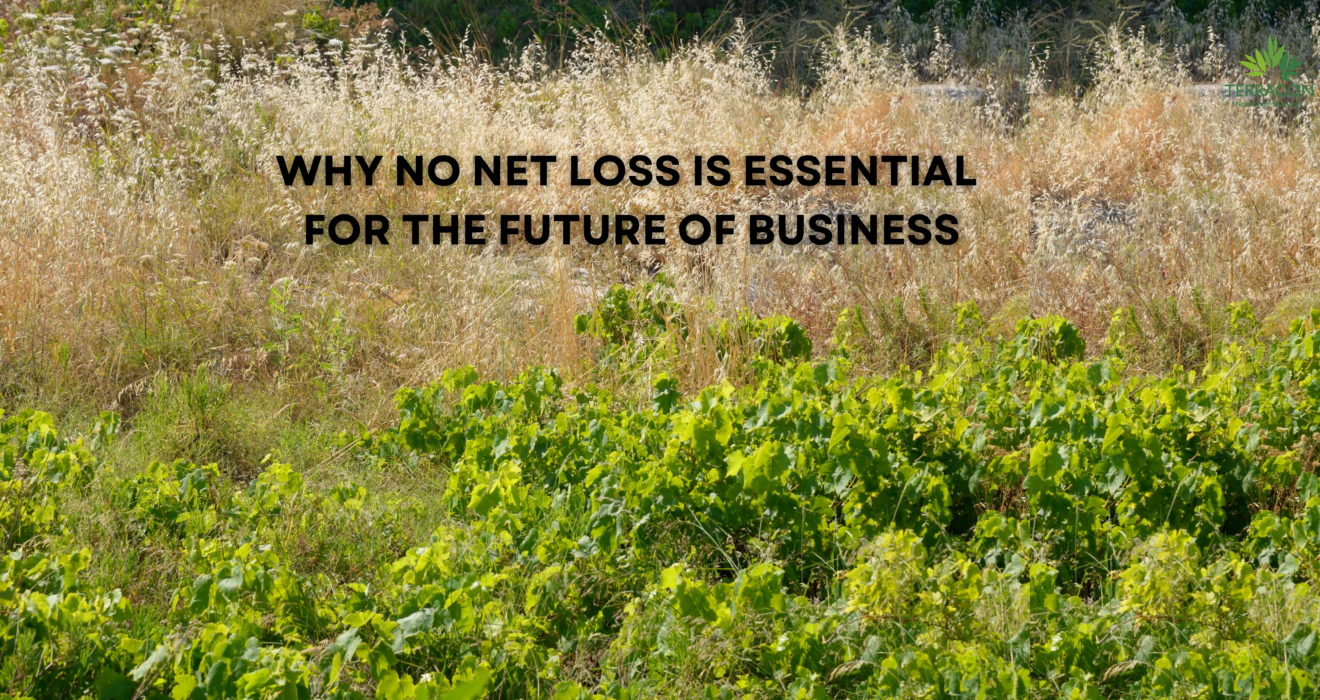Human activity, particularly through industrialization, agriculture, and resource extraction, has increasingly disrupted nature over the last century. Industries, in their pursuit of growth, have significantly altered ecosystems, contributing to deforestation, biodiversity loss, soil degradation, and pollution. Large corporations, driven by the demand for timber, land, and minerals, have cleared vast rainforests and exploited natural resources, often with little regard for long-term environmental impacts. Meanwhile, smaller-scale activities such as overfishing and unsustainable production practices in fashion further add to the ecological burden. Each business action, whether big or small, leaves an indelible mark on the environment.
This disruption is no longer just an environmental issue; it has become a critical economic and social one. Ecosystems provide essential services such as clean air, water, fertile soil, and climate regulation—services on which industries depend. As companies continue to exploit these resources unsustainably, we face grave consequences: climate change, habitat loss, and the extinction of species. The 2030 Sustainable Development Goals (SDGs) call for climate action, responsible consumption, and ecosystem protection, while the 2050 targets aim for net-zero emissions. Businesses are now at the center of this transformation. The consequences of ignoring sustainability are clear: environmental degradation that will affect business operations, supply chains, and overall economic stability.
The Consequences of Disrupting Nature: Climate Change
The ongoing disruption of natural systems is one of the primary drivers of climate change. Deforestation, land degradation, and the loss of ”biodiversity” all contribute to the increase in greenhouse gases. Forests, wetlands, and oceans act as carbon sinks, absorbing carbon dioxide from the atmosphere. But when we cut down trees, drain wetlands, and destroy marine habitats, we reduce the earth’s ability to absorb these emissions, worsening global warming.
If human activity continues at its current pace, we will face catastrophic consequences, including rising global temperatures, extreme weather events, loss of biodiversity, and increased vulnerability to diseases. These impacts will affect not only our ecosystems but also the economy, human health, and social stability.
A Strategy to Mitigate: Adopting the No Net Loss (NNL) Framework
To counteract these negative impacts, companies can play a crucial role by adopting sustainable practices that protect and restore nature. One such strategy is the No Net Loss (NNL) approach. NNL is a strategy where companies aim to ensure that any environmental harm caused by their activities is balanced by equivalent conservation or restoration efforts elsewhere. By adopting NNL, businesses can contribute to halting biodiversity loss and even restore ecosystems. This framework ensures that their operations do not result in a net loss of biodiversity, creating a balance between development and environmental sustainability. NNL is not just about avoiding harm; it’s about making a positive contribution to the natural world, ensuring a future where both human progress and biodiversity can coexist.
As businesses advance in their sustainability efforts, they may shift from simply aiming for No Net Loss to adopting a Net Positive Impact (NPI) approach. NPI goes beyond mitigating harm and seeks to create tangible, positive outcomes for the environment. This progression enables companies to not only halt the degradation of ecosystems but actively restore and improve them. For instance, a company might focus on replenishing more natural resources than it consumes or investing in large-scale conservation projects. By evolving towards NPI, businesses can set a new standard of environmental responsibility, contributing more to nature than they take, and ensuring the long-term sustainability of the planet while supporting their growth
Practical Steps for Companies to Adopt the No Net Loss Framework
1. Biodiversity Assessment
Before a company can reduce its environmental impact, it must first understand its footprint. A comprehensive biodiversity assessment is the first step in the NNL approach. This involves identifying the species, habitats, and ecosystems that could be affected by the company’s activities. Companies can use tools such as biodiversity audits, Environmental Impact Assessments (EIAs), or Life Cycle Assessments (LCAs) to evaluate how their operations are impacting nature.
Through these assessments, businesses can understand where they need to act to prevent harm and where restoration or mitigation efforts are required.
2. Biodiversity Action Plans (BAPs)
After identifying the risks to biodiversity, companies should develop tailored Biodiversity Action Plans (BAPs). These plans outline strategies to minimize negative impacts and enhance positive contributions to biodiversity. Companies might engage in habitat restoration, reforestation, or creating wildlife corridors to protect species from habitat fragmentation.
BAPs should be specific, measurable, and time-bound. This means setting clear targets for biodiversity restoration and conservation, such as planting native vegetation, protecting endangered species, or establishing new protected areas.
3. Implementation
Once a Biodiversity Action Plan (BAP) is established, companies need to ensure its effective execution through a Biodiversity Management Plan (BMP). The BMP provides the operational guidelines and practices that help minimize environmental impacts during implementation. For example, companies can adopt sustainable land management practices, reduce water usage, minimize waste, and ensure that their operations support biodiversity conservation.
Employee training is essential to ensure that staff understand and follow these practices correctly. Additionally, working with local communities helps integrate biodiversity goals into regional efforts, fostering collaboration and sustainable land management. Regular monitoring of biodiversity indicators is crucial to assess the success of the BMP and make adjustments as necessary. Compliance with relevant environmental laws is also a key part of the implementation process, ensuring that biodiversity protection is legally supported. Through these efforts, companies can effectively manage and enhance biodiversity in their operations.
4. Monitoring and Reporting
After implementing the NNL strategies, companies must monitor their impact and assess whether their actions are delivering the desired outcomes. Monitoring can be done through regular environmental audits, biodiversity surveys, and reporting systems. To ensure transparency and accountability, companies can use frameworks such as the Global Reporting Initiative (GRI) and Environmental, Social, and Governance (ESG) reporting to communicate their biodiversity efforts and outcomes.
A scorecard or dashboard can be created to track progress against the biodiversity targets outlined in the BAP. Monitoring and reporting are crucial to understanding how successful the company’s efforts have been and where improvements may be needed.
5. Aligning with Broader Sustainability Goals (Net Positive Impact)
Companies should align their biodiversity efforts with broader sustainability goals, such as achieving a Net Positive Impact (NPI). NPI strategies go beyond No Net Loss to actively improve environmental conditions. For instance, companies might aim to restore more habitat than they disturb or contribute to climate action by reducing emissions and investing in clean energy.
Adopting both NNL and NPI strategies ensures that companies not only avoid harming the environment but actively contribute to its recovery and improvement. This approach leads to better long-term sustainability and business resilience.
6. Biodiversity Offsets
Biodiversity offsets are a tool companies can use as part of the NNL strategy. Offsets involve compensating for biodiversity loss in one area by enhancing or protecting biodiversity elsewhere. For example, if a company’s development project results in the loss of a wetland, the company might invest in restoring a similar wetland area or protecting another at-risk ecosystem.
These offsets must be carefully planned to ensure they lead to real, measurable improvements in biodiversity. It’s important that the offsets are additional, meaning they would not have happened without the company’s investment, and that they are permanent and verifiable.
How Can Companies Ensure Success in the No Net Loss Strategy?
Successfully implementing the NNL strategy requires a combination of technical expertise, commitment, and ongoing collaboration. Companies need to invest in science-based tools, partner with conservation organizations, engage with local communities, and ensure senior leadership commitment to sustainability goals.
Additionally, regular updates to biodiversity action plans and adaptation to new research or environmental changes are essential for the long-term success of the NNL approach. By making biodiversity a core part of corporate decision-making, companies can ensure they are making a meaningful contribution to both nature and society.
Conclusion
The importance of biodiversity cannot be overstated—it is foundational to the health of the planet and our own survival. However, human activity, particularly by companies, has been a major driver of biodiversity loss. By adopting strategies like No Net Loss, businesses can reduce their environmental footprint and contribute positively to conservation efforts.
Through practical steps such as conducting biodiversity assessments, developing action plans, implementing best practices, and integrating biodiversity offsets, companies can ensure that their activities do not harm the environment. Moreover, aligning these strategies with broader sustainability goals like Net Positive Impact can help businesses go beyond mere mitigation and make a lasting positive change.
The time to act is now. If businesses embrace these strategies, we can slow down the degradation of our planet and secure a sustainable future for both nature and humans.

Written by
Anjeeta Goud
Team- Business development and Strategy
Terracon Ecotech
Reference :
How the world’s largest companies depend on nature and biodiversity
Human impact their environment
No Net Loss and Net Positive Impact Approaches for Biodiversity




